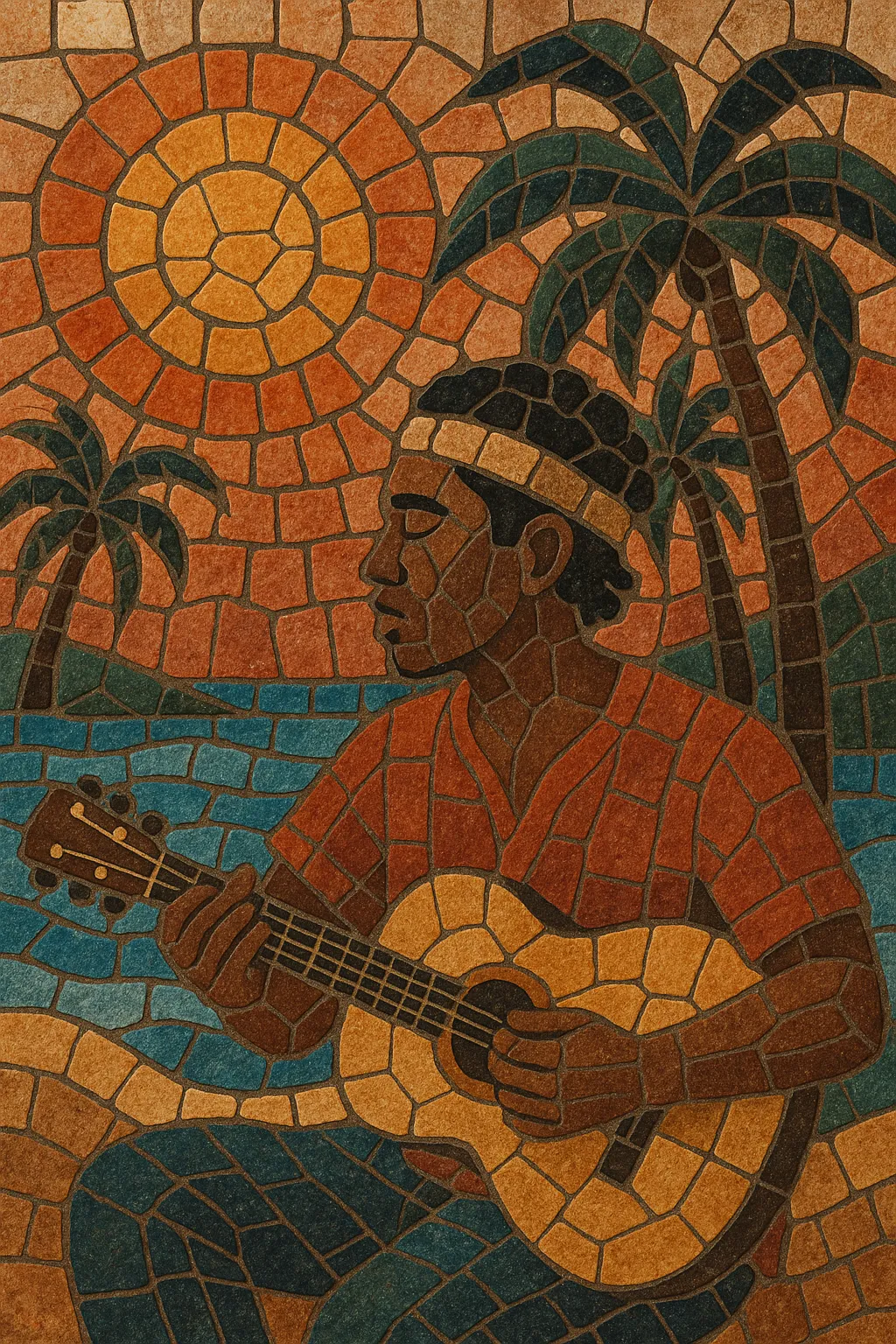Lagu timur (Indonesian for "eastern songs") is a contemporary pop current that emerged from Eastern Indonesia—especially Maluku, Papua/West Papua, and Nusa Tenggara.
It blends mellow pop songwriting with light reggae/dancehall grooves, acoustic guitar or ukulele strums, and simple trap/808-era production. Lyrics often switch between Indonesian and regional Malay varieties (Ambon Malay, Kupang Malay), carrying local slang and cadences that make the songs feel intimate and community-rooted.
Typical tracks center on love, loyalty, friendship, and family, delivered with sing-along hooks and uncomplicated major-key harmonies. The sound is distinctly DIY—home studios, YouTube-first releases, and social virality (later TikTok)—which helped propel the style nationwide and into the Indonesian diaspora.
Eastern Indonesian musicians (notably from Ambon/Maluku) have long shaped Indonesian popular music through church-influenced harmony singing, soulful ballads, and community ensemble traditions. Earlier national stars from the region built an audience for the area’s timbre, diction, and melodic sensibility.
The phrase "lagu timur" began circulating online as a convenient label for a wave of mellow, reggae-tinged pop from Eastern Indonesia. Affordable home recording, YouTube channels, WhatsApp/Facebook sharing, and later TikTok helped songs travel far beyond local scenes. Viral breakthroughs—most famously Near’s production with Dian Sorowea on "Karena Su Sayang" (2018)—introduced the broader public to the dialects, slang, and feel-good grooves of the east.
Producers favored acoustic guitar/ukulele, light offbeat skanks, and unfussy 808 drums—arrangements that supported conversational vocals. Hooks tended to be short and memorable, often repeating emotive phrases in Ambon or Kupang Malay. Collaborations were informal and quick, with songs moving from demo to upload in weeks, reinforcing a grassroots, community-forward identity.
As playlists and social platforms amplified the style, lagu timur became a recognizable flavor within Indonesian pop. Ambon’s designation as a UNESCO City of Music (2019) symbolically aligned with the moment, spotlighting the east’s long-standing musical contribution. The style’s success encouraged mainstream Indonesian pop, R&B, and hip hop artists to feature eastern singers, borrow grooves, and embrace regional slang.
Lagu timur normalized regional dialects in national pop, broadened the palette of Indonesian mainstream rhythmically (via reggae/dancehall backbeats) and harmonically (via church-derived backing vocals), and demonstrated the power of low-budget, platform-native production to launch nationwide hits.


